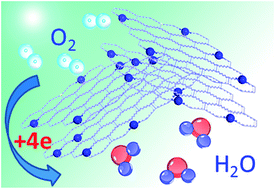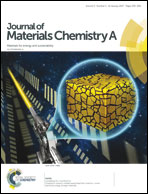High oxygen reduction activity on a metal–organic framework derived carbon combined with high degree of graphitization and pyridinic-N dopants†
Abstract
N-doped porous carbons have been considered as one of the most promising earth-abundant catalysts for the oxygen reduction reaction (ORR) owing to their high activity and excellent stability. Among various types of N-containing groups, pyridinic-N has been identified as the most effective catalytic sites for the ORR, as demonstrated by a recent study. However, the fabrication of porous carbons with a high density of exposed pyridinic-N sites has been rarely reported. In this work, the ORR catalytic properties of a series of pyridinic-N doped porous carbon (PNPC) which was derived by carbonization of a pyridyl-ligand based MOF were investigated. At different carbonization temperatures, this series of carbon exhibits different pyridinic-N contents and different degrees of carbonization. The ORR studies show that the graphitization degree of carbon has a significant impact on ORR catalytic activity besides N-groups. Electrochemical impedance spectroscopy (EIS) reveals that the electron transfer resistance in the ORR decreases significantly with the higher degree of graphitization, which gives rise to a higher ORR activity for these PNPCs. The synergistic effect of the high density of pyridinic-N sites and decreased electron impedance results in remarkably improved ORR activity which is comparable with that of the commercial Pt/C (10 wt%) catalyst. The result of this work could provide some guidance for designing or synthesizing highly efficient ORR catalysts.

- This article is part of the themed collection: JMC A Editor’s choice collection: Recent advances in solar fuels and photocatalysis research

 Please wait while we load your content...
Please wait while we load your content...